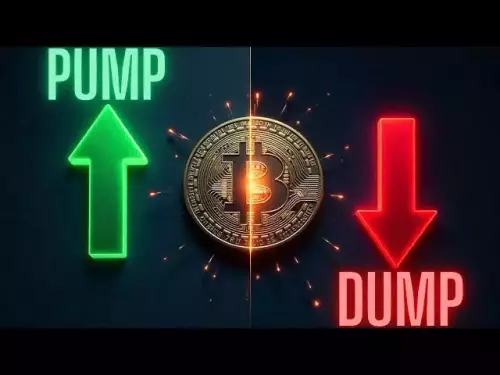-
 bitcoin
bitcoin $115178.669275 USD
3.07% -
 ethereum
ethereum $4187.145122 USD
5.98% -
 tether
tether $0.999974 USD
-0.02% -
 xrp
xrp $2.657749 USD
1.76% -
 bnb
bnb $1143.755467 USD
1.88% -
 solana
solana $204.642189 USD
5.78% -
 usd-coin
usd-coin $0.999808 USD
-0.01% -
 dogecoin
dogecoin $0.207825 USD
5.98% -
 tron
tron $0.300913 USD
1.42% -
 cardano
cardano $0.687188 USD
5.24% -
 hyperliquid
hyperliquid $48.081828 USD
8.50% -
 chainlink
chainlink $18.790575 USD
4.94% -
 bitcoin-cash
bitcoin-cash $558.997512 USD
8.92% -
 stellar
stellar $0.333150 USD
2.01% -
 ethena-usde
ethena-usde $0.999206 USD
0.00%
What is a security token? How is it different from a utility token?
Security tokens represent ownership in assets like real estate or companies, offering dividends and voting rights, while utility tokens grant access to blockchain services.
Apr 15, 2025 at 06:49 pm
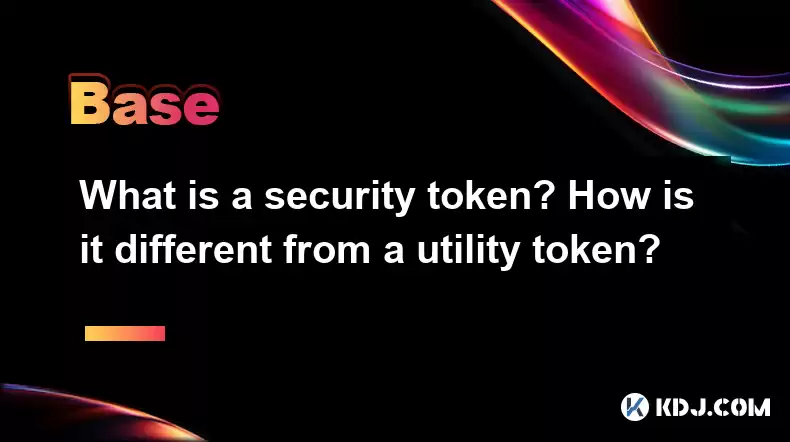
A security token is a type of digital asset that represents ownership in an underlying asset, such as a company, real estate, or other financial instruments. These tokens are subject to regulatory oversight because they are considered securities under financial regulations, such as the U.S. Securities and Exchange Commission (SEC) guidelines. Security tokens are designed to provide investors with traditional investment benefits, such as dividends, revenue shares, or voting rights, similar to stocks or bonds.
In contrast, a utility token is a digital token that provides access to a specific product or service within a blockchain ecosystem. These tokens are not designed as investments but rather as a means to use a platform or service. Utility tokens are often used in initial coin offerings (ICOs) to fund the development of a project, and they are not subject to the same regulatory scrutiny as security tokens.
Key Characteristics of Security Tokens
Security tokens have several defining characteristics that set them apart from other types of tokens. Firstly, they are backed by tangible assets, which means they represent ownership in something real, such as equity in a company or a share in a real estate project. This backing provides a level of security and value to the token, as it is tied to the performance of the underlying asset.
Secondly, security tokens are subject to regulatory compliance. This means that issuers must adhere to securities laws and regulations, which can vary by jurisdiction. For example, in the United States, issuers of security tokens must comply with the SEC's regulations, which may include registering the token offering or qualifying for an exemption.
Thirdly, security tokens often provide investors with traditional financial benefits. These can include dividends, interest payments, revenue shares, or voting rights, depending on the nature of the underlying asset. This makes security tokens attractive to investors looking for traditional investment opportunities within the blockchain space.
Key Characteristics of Utility Tokens
Utility tokens, on the other hand, have their own set of defining characteristics. Firstly, they are primarily used to access a product or service within a blockchain ecosystem. For example, a utility token might be required to use a decentralized application (dApp) or to access a specific feature on a platform.
Secondly, utility tokens are not backed by tangible assets. Instead, their value is derived from the demand for the product or service they provide access to. This means that the value of a utility token can fluctuate based on the popularity and utility of the platform it is associated with.
Thirdly, utility tokens are generally not subject to the same regulatory scrutiny as security tokens. This is because they are not considered investments but rather a means to use a platform or service. However, this can vary by jurisdiction, and some countries may have specific regulations governing the issuance and use of utility tokens.
Use Cases for Security Tokens
Security tokens have a wide range of potential use cases within the blockchain ecosystem. One common use case is equity crowdfunding, where companies issue security tokens to raise capital from investors. These tokens represent ownership in the company and can provide investors with dividends or voting rights.
Another use case for security tokens is real estate tokenization. This involves issuing tokens that represent ownership in a real estate property. Investors can buy and sell these tokens, providing a more liquid and accessible way to invest in real estate.
Security tokens can also be used for debt instruments, such as bonds or loans. In this case, the tokens represent a debt obligation and can provide investors with interest payments.
Use Cases for Utility Tokens
Utility tokens also have a variety of use cases within the blockchain ecosystem. One common use case is access to decentralized applications (dApps). For example, a utility token might be required to use a decentralized exchange or to access a specific feature on a platform.
Another use case for utility tokens is governance. Some blockchain projects use utility tokens to give token holders voting rights on the direction of the project. This can help to decentralize decision-making and give the community a say in the project's development.
Utility tokens can also be used for rewards and incentives. For example, a platform might reward users with utility tokens for participating in the ecosystem, such as by providing liquidity or contributing content.
Regulatory Considerations
Security tokens are subject to a range of regulatory considerations, depending on the jurisdiction. In the United States, for example, issuers of security tokens must comply with the SEC's regulations, which can include registering the token offering or qualifying for an exemption. This can involve a significant amount of paperwork and legal fees, but it provides investors with a level of protection and transparency.
Utility tokens, on the other hand, are generally not subject to the same level of regulatory scrutiny. However, this can vary by jurisdiction, and some countries may have specific regulations governing the issuance and use of utility tokens. For example, some countries may require utility token issuers to register with a financial regulator or to comply with anti-money laundering (AML) and know-your-customer (KYC) regulations.
How to Issue a Security Token
Issuing a security token involves several steps, which can vary depending on the jurisdiction and the specific requirements of the regulatory body. Here is a general overview of the process:
Determine the nature of the token: The first step is to determine whether the token you are issuing is a security token. This involves analyzing the characteristics of the token and determining whether it falls under the definition of a security in your jurisdiction.
Choose a blockchain platform: Once you have determined that you are issuing a security token, you need to choose a blockchain platform to issue it on. Some popular platforms for issuing security tokens include Ethereum, Polymath, and STO platforms like tZERO.
Comply with regulatory requirements: Depending on your jurisdiction, you may need to comply with specific regulatory requirements to issue a security token. This can involve registering the token offering with a financial regulator or qualifying for an exemption.
Create the token: Once you have chosen a blockchain platform and complied with regulatory requirements, you can create the security token. This involves writing the smart contract code that defines the token's characteristics and functionality.
Conduct a token sale: After creating the token, you can conduct a token sale to raise capital from investors. This can involve setting up a website or platform where investors can purchase the tokens, as well as marketing the token sale to potential investors.
Distribute the tokens: Once the token sale is complete, you can distribute the tokens to investors. This involves transferring the tokens to the investors' wallets and ensuring that they are properly recorded on the blockchain.
How to Issue a Utility Token
Issuing a utility token is generally less complex than issuing a security token, but it still involves several steps. Here is a general overview of the process:
Determine the purpose of the token: The first step is to determine the purpose of the utility token. This involves deciding what product or service the token will provide access to and how it will be used within the ecosystem.
Choose a blockchain platform: Once you have determined the purpose of the token, you need to choose a blockchain platform to issue it on. Some popular platforms for issuing utility tokens include Ethereum, Binance Smart Chain, and Solana.
Create the token: After choosing a blockchain platform, you can create the utility token. This involves writing the smart contract code that defines the token's characteristics and functionality.
Conduct a token sale: Once the token is created, you can conduct a token sale to raise capital from investors. This can involve setting up a website or platform where investors can purchase the tokens, as well as marketing the token sale to potential investors.
Distribute the tokens: After the token sale is complete, you can distribute the tokens to investors. This involves transferring the tokens to the investors' wallets and ensuring that they are properly recorded on the blockchain.
Frequently Asked Questions
Q: Can a token be both a security token and a utility token?A: Yes, it is possible for a token to have characteristics of both a security token and a utility token. These are often referred to as hybrid tokens. However, the regulatory treatment of such tokens can be complex and may vary by jurisdiction.
Q: How do I determine if my token is a security token?A: To determine if your token is a security token, you need to analyze its characteristics and see if it falls under the definition of a security in your jurisdiction. In the United States, for example, the SEC uses the Howey Test to determine if a token is a security. This test looks at whether the token involves an investment of money in a common enterprise with an expectation of profits derived from the efforts of others.
Q: What are the benefits of using security tokens for investors?A: Security tokens offer several benefits for investors. Firstly, they provide a way to invest in traditional assets, such as real estate or company equity, through a blockchain platform. This can provide greater liquidity and accessibility. Secondly, security tokens are subject to regulatory oversight, which can provide investors with a level of protection and transparency. Finally, security tokens can provide traditional financial benefits, such as dividends or voting rights, which can be attractive to investors looking for traditional investment opportunities within the blockchain space.
Q: Are there any risks associated with utility tokens?A: Yes, there are several risks associated with utility tokens. Firstly, the value of a utility token can be highly volatile, as it is derived from the demand for the product or service it provides access to. Secondly, utility tokens are not backed by tangible assets, which means that they can lose value if the platform or service they are associated with fails. Finally, while utility tokens are generally not subject to the same level of regulatory scrutiny as security tokens, there can still be regulatory risks, depending on the jurisdiction.
Disclaimer:info@kdj.com
The information provided is not trading advice. kdj.com does not assume any responsibility for any investments made based on the information provided in this article. Cryptocurrencies are highly volatile and it is highly recommended that you invest with caution after thorough research!
If you believe that the content used on this website infringes your copyright, please contact us immediately (info@kdj.com) and we will delete it promptly.
- Essex Post Office, 5p Coins, and King Charles: A Royal Mint Revelation!
- 2025-10-23 10:30:16
- Waymo's Newark Airport AV Tests: Alphabet's AI Gamble Pays Off?
- 2025-10-23 10:30:16
- King Charles 5p Coins: A Royal Flush in Your Pocket?
- 2025-10-23 10:35:18
- Solana, Crypto Advisory, and Forward Industries: A New York Minute on the Future of Finance
- 2025-10-23 08:51:22
- MAGACOIN: Ethereum Whales Dive into the Hottest Presale of 2025
- 2025-10-23 08:51:22
- Kadena's End of the Road? KDA Token Plummets Amid Project Abandonment
- 2025-10-23 08:55:34
Related knowledge
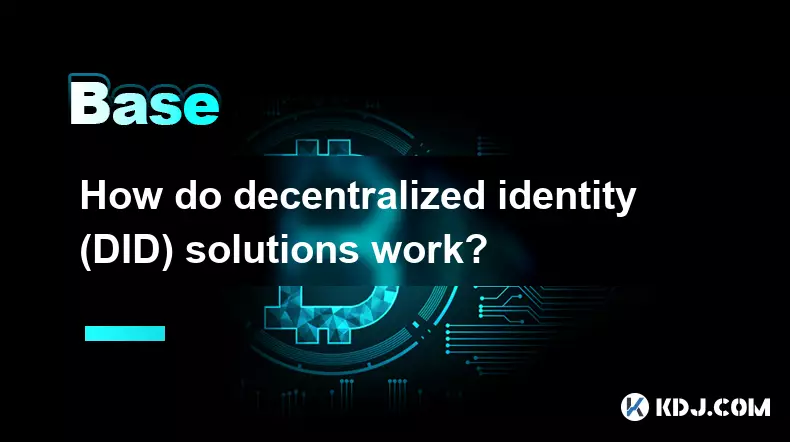
How do decentralized identity (DID) solutions work?
Oct 14,2025 at 11:36pm
Understanding Decentralized Identity in the Blockchain Ecosystem1. Decentralized identity (DID) solutions are built on blockchain networks, allowing i...
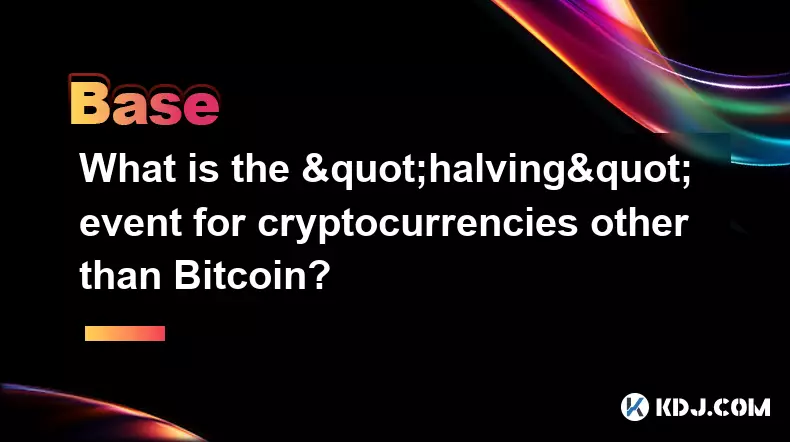
What is the "halving" event for cryptocurrencies other than Bitcoin?
Oct 25,2025 at 12:19pm
Decentralized Exchanges Gain Momentum in 20241. Decentralized exchanges (DEXs) have seen a surge in trading volume as users prioritize control over th...

What is the difference between Near Protocol and Ethereum?
Oct 15,2025 at 08:01am
Near Protocol and Ethereum: Core Architectural Differences1. Near Protocol operates on a sharded blockchain architecture known as Nightshade, which al...
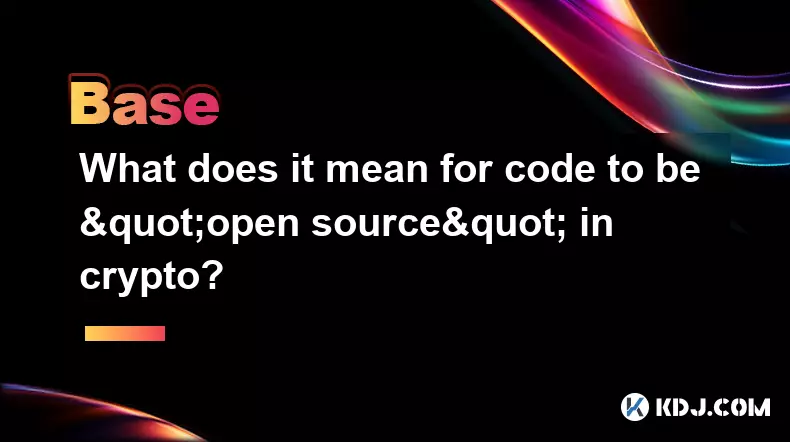
What does it mean for code to be "open source" in crypto?
Oct 12,2025 at 01:54pm
Understanding Open Source in the Cryptocurrency Ecosystem1. In the context of cryptocurrency, open source refers to software whose code is publicly ac...

What is the purpose of a "testnet"?
Oct 12,2025 at 09:01am
Understanding the Role of Testnets in Blockchain Development1. A testnet serves as a parallel version of a blockchain network, designed specifically f...

How to avoid phishing scams in crypto?
Oct 13,2025 at 06:18pm
Understanding Common Crypto Phishing Tactics1. Cybercriminals frequently use fake websites that mirror legitimate crypto exchanges or wallet platforms...

How do decentralized identity (DID) solutions work?
Oct 14,2025 at 11:36pm
Understanding Decentralized Identity in the Blockchain Ecosystem1. Decentralized identity (DID) solutions are built on blockchain networks, allowing i...

What is the "halving" event for cryptocurrencies other than Bitcoin?
Oct 25,2025 at 12:19pm
Decentralized Exchanges Gain Momentum in 20241. Decentralized exchanges (DEXs) have seen a surge in trading volume as users prioritize control over th...

What is the difference between Near Protocol and Ethereum?
Oct 15,2025 at 08:01am
Near Protocol and Ethereum: Core Architectural Differences1. Near Protocol operates on a sharded blockchain architecture known as Nightshade, which al...

What does it mean for code to be "open source" in crypto?
Oct 12,2025 at 01:54pm
Understanding Open Source in the Cryptocurrency Ecosystem1. In the context of cryptocurrency, open source refers to software whose code is publicly ac...

What is the purpose of a "testnet"?
Oct 12,2025 at 09:01am
Understanding the Role of Testnets in Blockchain Development1. A testnet serves as a parallel version of a blockchain network, designed specifically f...

How to avoid phishing scams in crypto?
Oct 13,2025 at 06:18pm
Understanding Common Crypto Phishing Tactics1. Cybercriminals frequently use fake websites that mirror legitimate crypto exchanges or wallet platforms...
See all articles























